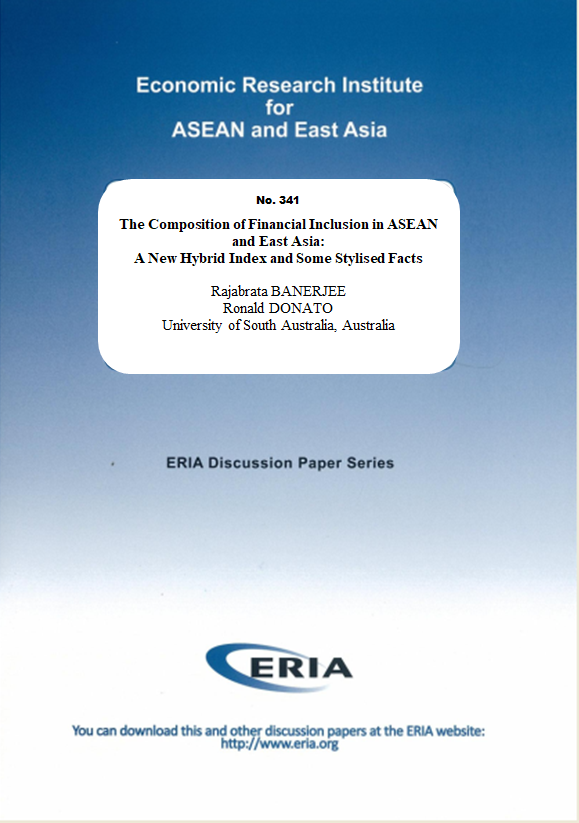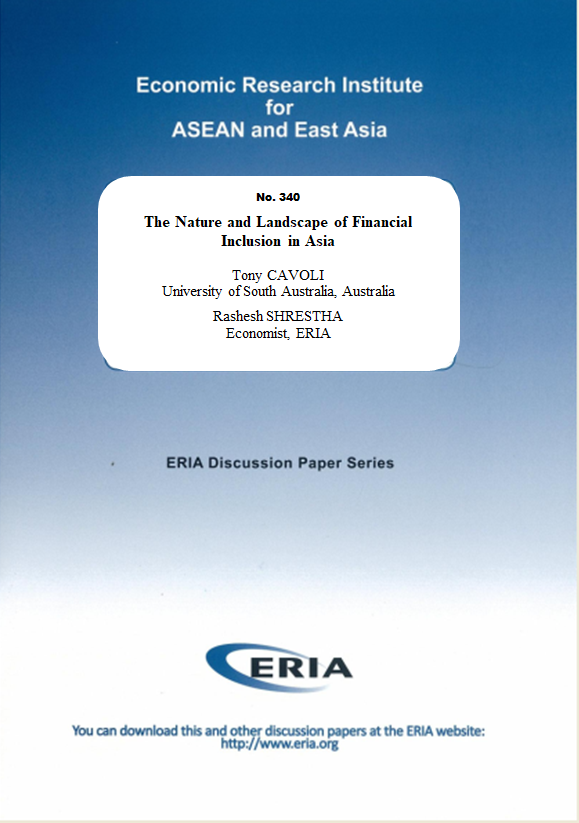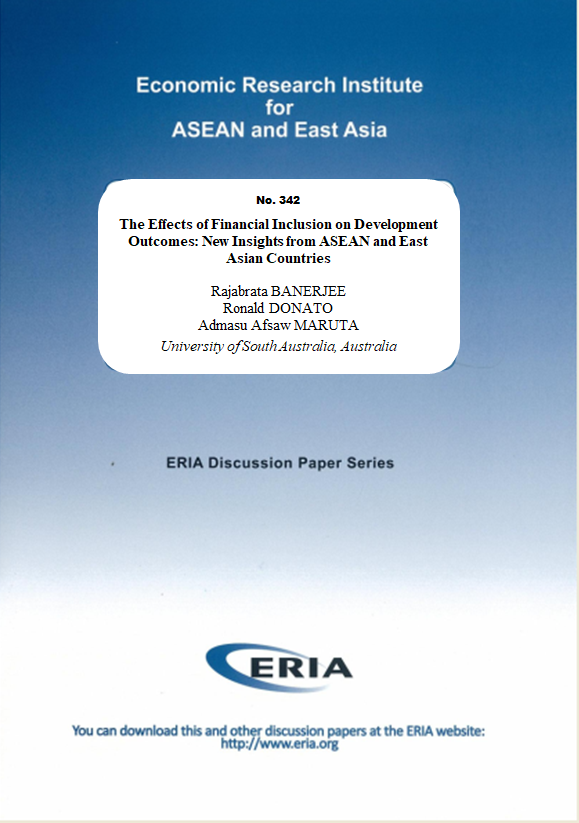The Composition of Financial Inclusion in ASEAN and East Asia: A New Hybrid Index and Some Stylised Facts

Date:
24 September 2020Category:
ASEAN, Finance and MacroeconomyType:
Discussion PapersTags:
ASEAN, East Asia, Finance, Financial InclusionPrint Article:
The paper provides an overview of the existing measures of financial inclusion and critically evaluates the two widely used existing methodologies to measure the dimensions – the principal component analysis (PCA) method and the Distance method, respectively. We subsequently propose a new hybrid financial inclusion index, which draws on the strengths of existing measures. We propose four key stylised facts by critically evaluating three dimensions of financial inclusion – access, usage, and quality in 22 Asian countries in the period 2004-2015. Utilising PCA scores, we identify the top two indicators under each dimension and by country, which are directly relevant for policy perspectives. An important finding is that the top five and the bottom five countries are the same under all three methodologies. There is a pattern across countries in adopting usage, access, and quality dimensions of financial inclusion over time. We also find that the top two indicators appear to play a significant role across all developing countries in the sample.




